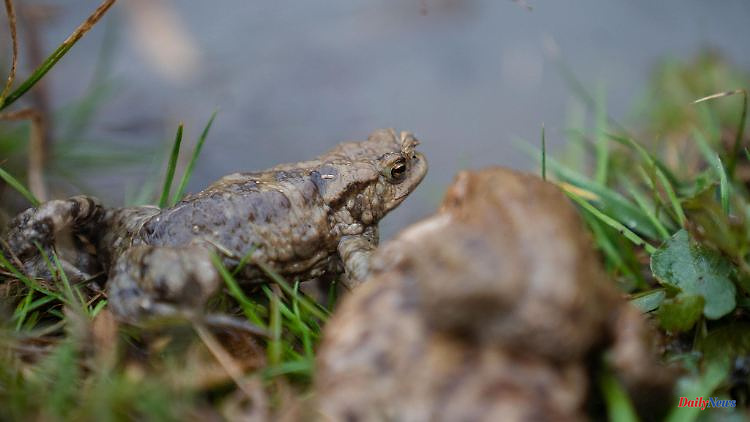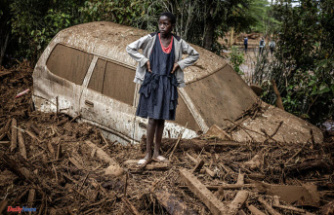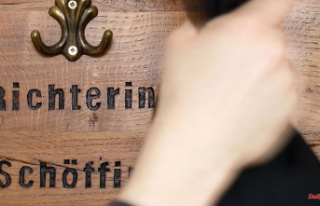The first toads and frogs have already migrated to the spawning waters. In the next few weeks they will be on the move again en masse. Many die on the streets.
Oschersleben (dpa/sa) - In view of the mild temperatures, the first toads, newts and other amphibians in Saxony-Anhalt have already migrated back to their mating waters. However, the big wave is only expected in about two weeks, when the temperatures are stable above five degrees again at night, said a spokeswoman for the German Nature Conservation Union (Nabu) in Magdeburg. With the beginning of migration, common toads, common frogs and smooth newts come out of their winter hiding places in this country.
With nightly temperatures of at least five degrees and damp weather, frogs, toads, newts and salamanders make the often dangerous journey to the spawning grounds. Thousands are killed on roads every year. Experts expect the amphibian migration to peak in one to three weeks. According to Nabu, the hikes could also extend into May.
To ensure that as many of the protected animals as possible survive the journey, volunteers in Saxony-Anhalt are building protective fences along roads - for example in Barleben, Loburg and Jerichower Land. The Nabu calls on motorists to drive particularly carefully and slowly in the coming period
Amphibian populations in the country have been declining for years. "Every year there are fewer amphibians that we help across the street," says Ulf Drzymala, chairman of the Loburg Nabu Group. One reason for this is the persistent drought and lack of water. "Some spawning waters and terrestrial habitats have simply dried up and populations have been drastically reduced as a result," says Drzymala. There is an urgent need to improve water management and prevent water from running off.












